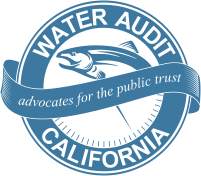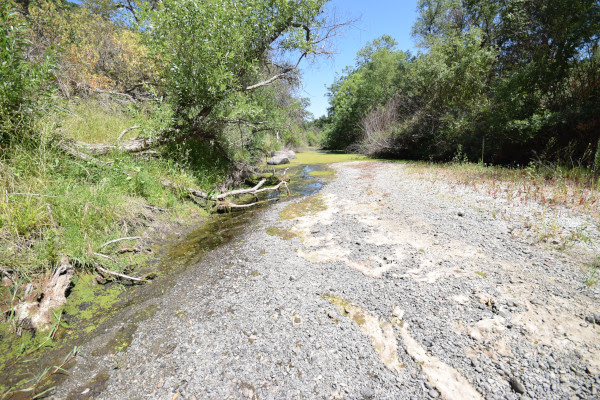Release date: FOR IMMEDIATE RELEASE

WATER AUDIT SUES ST. HELENA OVER ALLEGED FAILURE TO UPHOLD PUBLIC TRUST
[NAPA, CA, JUNE 17, 2021]. Water Audit California is again suing the City of St. Helena over their management of water resources. This comes on the heels of a similar suit filed June 1 against Napa County. Both cases aim to increase monitoring and oversight of groundwater and surface water resources.“There doesn’t appear to be enough information available about water availability for anyone to make informed decisions, or for the public to understand what is going on,” Grant Reynolds, a director of Water Audit said. The suit cites poor documentation of major water uses, including pumping at the City of St. Helena’s Pope Street wells complex, and water deliveries to vineyards, wineries, and Meadowood resort.
Water Audit’s complaint does not ask for changes to existing water uses. Instead, it seeks an injunction to stop the City from issuing new groundwater well drilling permits until enough information is available to make informed water allocation decisions. The complaint identifies the authority of NOAA Fisheries, the State Water Resources Control Board, and the California Departments of Water Resources and Fish and Wildlife, and requests their participation in decision-making.
“When water managers are asking people to cut back their personal water use, residents deserve honest accounting of the community’s water assets. At the very least, planners should not approve new commercial well permits if existing use is drying our waterways and pushing endangered species closer to extinction,” Reynolds said.
June through mid-October is the driest time of year in Napa Valley. It’s when water demand is highest from agriculture, wine production, and landscaping, and when flows are lowest in creeks. Water use by agriculture and landscaping increases in droughts.
Pope Street Wells
USGS records show that drying of the Napa River adjacent to the Pope Street wells complex has increased in frequency and duration while the City has increased pumping of groundwater for municipal use. In dry years, 30% of St. Helena’s supply comes from these wells, according to LAFCO’s 2020 Municipal Service Review. A 2014 Luhdorff and Scalmanini Consulting Engineers report stated that public water supply wells were dewatering the Napa River in this location and, in 2016, recommended that Napa County install additional monitoring of groundwater-surface water interactions where data are lacking.
”You may refuse to measure what you do not wish to manage, but you cannot evade trustee duties simply because it is inconvenient,” Reynolds said.
Vineyards
Water demands of the 1,080 acres of vineyard within St. Helena city limits have the potential to deplete surface water resources. The suit seeks to determine which operations may be doing so, and to ensure that their practices are not in conflict with public trust responsibilities, which include maintaining flows in waterways.
“There is a balancing act between private interests and public interests. It is unacceptable to impoverish the public trust for private gain,” Reynolds said.
Wineries
The suit gives examples of murky water agreements between City of St. Helena and wineries, including Spring Mountain Winery, Sutter Home, Beringer/Treasury, and Trinchero Family Estates. What little is publicly known about sales of municipal water to large industrial users suggests that companies pay less than residents for water from the same sources, and that they consume over 20% of the City’s annual drinking water supply.
“Wineries may have a greater impact on creeks than vineyards do, because of the timing and intensity of water use,” Reynolds said. Wine production requires about six gallons of potable water per gallon of finished wine, and peak water demand comes during late August through October, when crush pads, tanks, and hoses require cleaning. Wineries source water from municipal supplies and from their own groundwater wells.
The highest concentration of wineries in Napa Valley is around St. Helena. At least twenty-eight wineries are located inside St. Helena’s boundary, and Napa County has permitted over 13 million gallons of total wine production for over 90 wineries within a half-mile of city limits. City of St. Helena does not publicly report permitted production for wineries it oversees, however Napa County’s winery database suggests that over 10 million gallons are permitted within city limits. Actual production is contingent on crop yields and imported grapes.
Meadowood
Meadowood resort appears to be receiving water subsidized by St. Helena rate-payers, and current operations may be out of compliance with Measures J and P. In 1990, Meadowood and the City of St. Helena entered into a contract for the delivery of 20 million gallons of water annually. Initially, Meadowood paid the same rate as St. Helena residents for water, plus a surcharge covering the cost of pumping water uphill to the facility. In 2016, the contract was amended and the surcharge was eliminated. Since that time, ratepayers in the service area have subsidized pumping costs. It appears that the change was never announced, and the revised contract has not been publicly posted.
“St. Helena residents subsidize water delivery to Meadowood, and then the resort’s transient occupancy tax is paid to Napa County. It’s not a great deal for St. Helena residential rate-payers,” Reynolds said.
Carpenter agreement
Poor water-resources oversight is also evident in a 1962 agreement between the City of St. Helena and Dr. Lewis Carpenter. When Bell Canyon Reservoir was built, it impounded the location of Dr. Carpenter’s preexisting water right, so the City agreed to allocate up to 400 acre-feet per year of water in the reservoir to him. The agreement states explicitly that the right belongs to Dr. Carpenter only, and is non-transferrable without prior written agreement. No documentation for a transfer of the right has been located by Water Audit, and Dr. Carpenter passed away in April 2013. Although his death should have ended the contract, the City of St. Helena has delivered water under his agreement as recently as 2021. The volume of the delivery is not well-documented. It may be 30.6 acre-feet, or up to 400 acre-feet.
“The amount of water is secondary; the first priority is a credible accounting system so that making informed water management decisions is possible,” Reynolds said.
Public Trust
According to California law, cities and counties are required to manage environmental resources in the same way that a trustee of an estate has fiduciary duties over financial assets. Maintaining records, disclosing facts, and acting solely in the interests of beneficiaries are essential requirements. Water resources and the plants and animals they support are all part of the public trust.
“Water Audit’s actions are all in pursuit of a single goal: protecting the public trust of resources which sustain all of us,” Reynolds said.
***
The full complaint is available on the Water Audit California website.

A view of the Napa River, looking downstream, adjacent to Pope St. well complex in St. Helena on June 6, 2021.

Watering has stopped at the Robert Louis Stevenson Middle School soccer field in June, 2021.